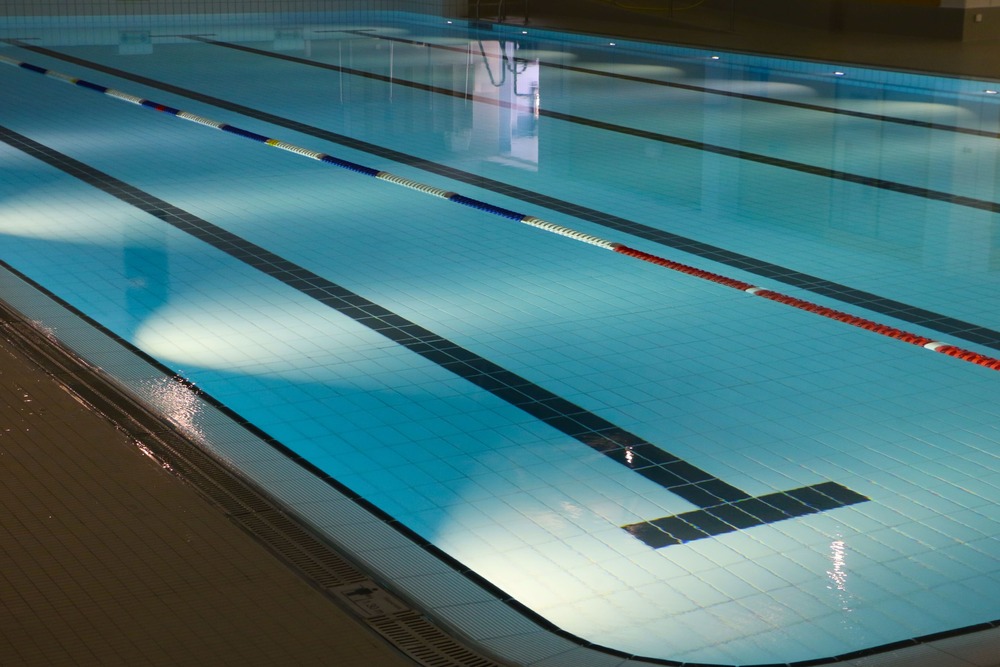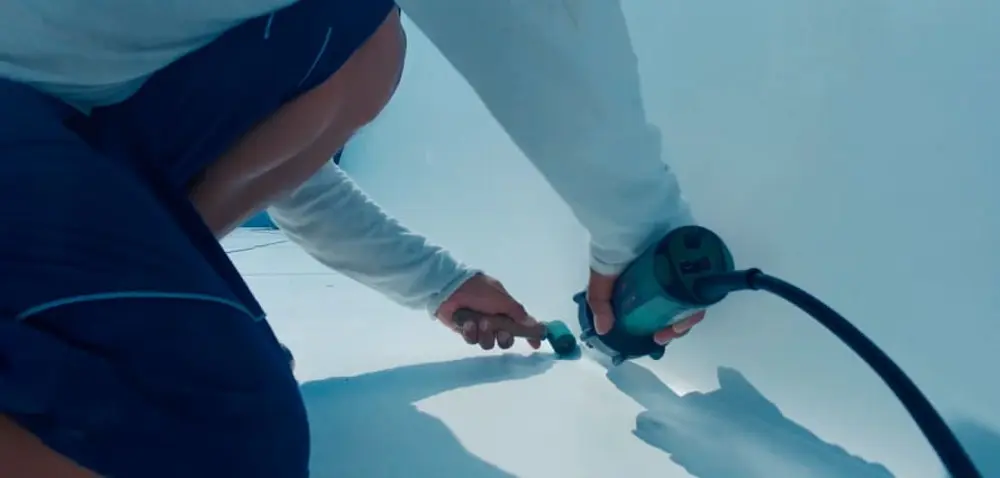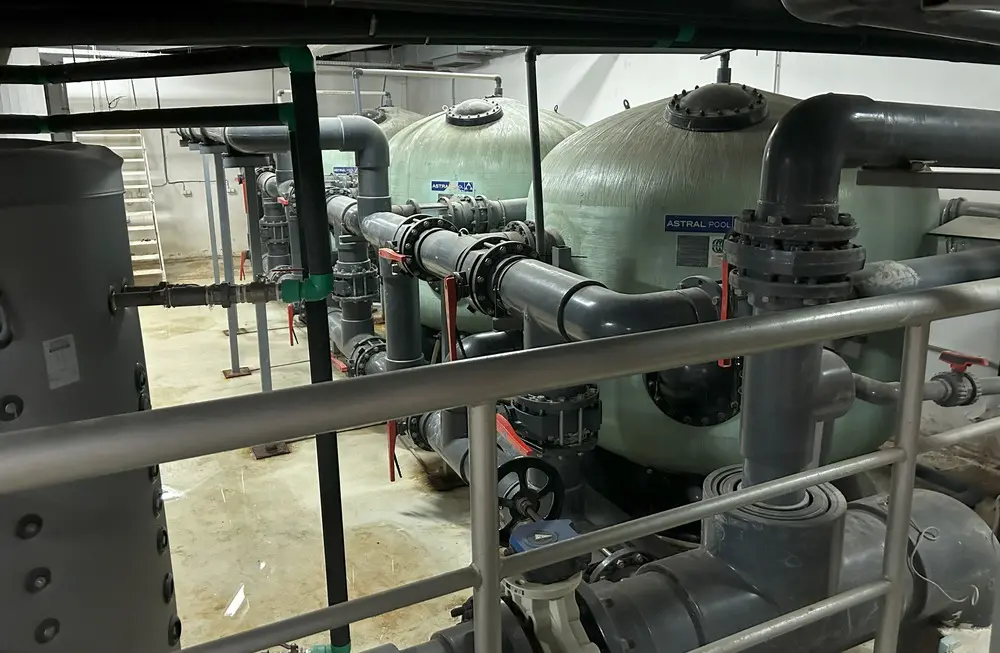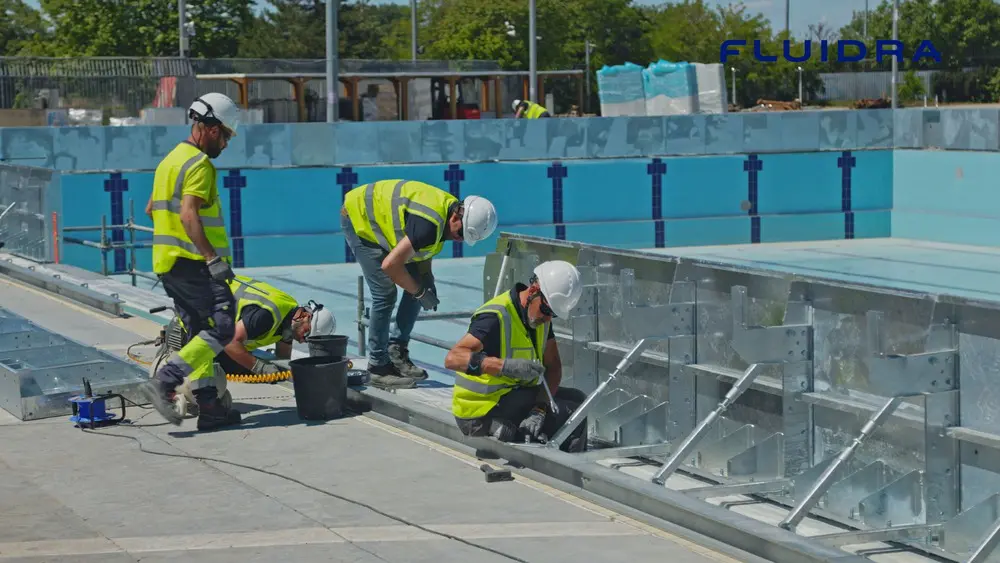Swimming pools are a wonderful place to relax and have fun, but a hidden leak can quickly turn an aquatic oasis into a costly headache. From increased water bills to potential structural damage, pool leaks can cause significant stress and financial burdens. This is why swimming pool leak detection is crucial.
This comprehensive guide covers everything you need to know about swimming pool leak detection, from preventive measures to reactive solutions, ensuring your pool remains leak-free and cost-efficient. With Fluidra’s expertise in pool construction and maintenance, pool owners and operators can rest assured that their pool remains a source of enjoyment for years to come.
Dive deeper with the eBook
Causes of swimming pool leaks
While some water loss is normal due to evaporation and splashing, excessive water loss is a red flag. Understanding the common causes of pool leaks can help identify problems early and take corrective action. That’s why swimming pool leak detection methods are essential.
1. Cracks and fissures
Over time, water pressure and the subtle shifts of the surrounding soil can lead to the formation of cracks and fissures in the pool’s structure. These tiny imperfections may seem harmless initially, but they can gradually expand, allowing water to seep out and compromise the pool’s integrity.
2. Hydraulic damage
The constant water flow through the pool’s hydraulic system puts immense pressure on pipes, fittings, and connections. Over time, this pressure can lead to wear and tear, resulting in leaks.
Remember, early detection is key. By familiarizing themselves with these common causes and staying vigilant for any signs of trouble, pool operators can promptly address leaks and minimize damage.

Swimming pool leak detection methods
While some water loss is normal due to evaporation and other factors, a significant drop in water level is a telltale sign of a potential leak. Early detection is crucial to prevent further damage and costly repairs.
1. The telltale signs: Visual inspection
A simple walk-around is a straightforward approach to swimming pool leak detection that can reveal valuable clues. Keep an eye out for:
- Cracks or gaps: Look for any visible cracks, gaps, or separation in the pool’s surface, tiles, or coping.
- Wet spots: Check for damp areas or puddles around the pool, especially near equipment, pipes, or the pool’s base.
- Algae growth: Unusual algae growth in specific areas could indicate a slow leak, as algae thrive in damp environments.
- Unexplained water loss: If the pool’s water level consistently drops more than 2.5 cm per week, even after accounting for evaporation and other factors, it strongly indicates a leak.
2. The bucket test: A simple yet effective method
The bucket test is a swimming pool leak detection method that can help differentiate between water loss due to evaporation and a potential leak. Here’s how it works:
- Place a bucket filled with water on the pool’s steps, ensuring it’s partially submerged.
- Mark the water level inside the bucket and on the pool’s wall.
- After 24 hours, compare the two water levels. If the pool water level has dropped significantly more than inside the bucket, there is likely a leak.
3. The dye test: Following the colorful trail
The dye test is a helpful visual aid for pinpointing leaks in the pool shell or around fittings. Here’s how to perform it:
- Select a pool-safe dye or food coloring.
- Carefully add the dye near suspected leak areas, such as cracks, fittings, or around the pool’s perimeter.
- Watch closely for any movement or dye trails. If the dye is drawn towards a specific point, it indicates the leak’s location.
4. Pressure testing: Plumbing sleuthing
Pressure testing is a reliable method for swimming pool leak detection within the plumbing system. This involves pressurizing the pipes and monitoring for any pressure drops that indicate a leak. Pressure testing typically requires specialized equipment and is often performed by professionals.
5. Electronic leak detection: High-tech precision
Advanced electronic swimming pool leak detection devices use sound waves or vibrations to pinpoint leaks accurately. These tools can detect even the smallest leaks without extensive digging or disruption. While they can be a valuable investment, they may also come with a higher price tag.

How to repair swimming pool leaks
Once the source of the leak has been identified, it’s time to take action and restore the pool to its leak-free glory. The repair method, and whether professional assistance is required, will depend on the type and severity of the leak.
1. Apply sealant to minor leaks
Applying a pool-grade sealant can be an effective and relatively simple solution for small cracks or leaks in the pool shell. Ensure the area is clean and dry before applying the sealant according to the manufacturer’s instructions.
2. Tackle leaky pipes
If the swimming pool leak detection process reveals problems within the plumbing system, professional repair or replacement of the damaged pipes may be necessary. This could involve:
- Patching: For small leaks in accessible pipes, a patch or pipe clamp can be used to temporarily seal the leak.
- Pipe replacement: In cases of severe damage or corrosion, replacing the affected section of pipe is the most reliable solution.
- Professional assistance: For complex plumbing repairs or leaks in hard-to-reach areas, it’s best to enlist the help of a qualified pool professional.
3. Smooth out imperfections
Depending on the extent of the damage, cracks or chips in the pool’s surface can be repaired using epoxy or plaster. Proper surface preparation is essential for a successful repair.
4. Replace the liner
If the vinyl pool liner has a tear or significant wear, replacing the liner may be the best course of action. This involves draining the pool, removing the old liner, and installing a new one.
5. Seek expert assistance
In cases where the leak’s location is elusive or the repair is complex, hiring professional swimming pool leak detection and repair services can save time and ensure accurate, long-lasting results. These experts utilize specialized tools and techniques to pinpoint leaks and implement effective repair solutions.
A quick guide to repair methods and leak types
| Leak type | Suitable repair methods |
| Small cracks | Sealant application |
| Plumbing leaks | Patching, pipe replacement, professional repair |
| Surface damage | Epoxy or plaster repair |
| Vinyl liner tears | Liner replacement |
| Difficult-to-find leaks | Professional swimming pool leak detection and repair services |

Preventive measures to avoid leaks
Naturally, periodic checks on the pool’s structure, hydraulic systems, and equipment and regular maintenance are the most important preventive measures to avoid possible water leaks. Conduct routine inspections of the pool structure, plumbing, and equipment. Carry out the basic swimming pool leak detection protocols by looking for cracks, worn-out seals, and other signs of potential issues.
Thorough maintenance at the beginning and end of each swimming season is particularly important. This includes checking for wear and tear and addressing any minor issues before they become major problems. Operators should also maintain balanced water chemistry to prevent corrosion and scaling, which can damage the pool’s surface and plumbing.
Nevertheless, the first stages of design and the construction process are also key prevention strategies. Ensure that the pool and its components are installed correctly by professionals, as proper installation reduces the risk of leaks caused by structural flaws. Equally, investing in high-quality materials for pool construction and maintenance is essential, as durable materials are less likely to develop leaks over time.

Invest in a modular pool for a leak-free future
While diligent maintenance and timely repairs can address existing leaks, the most effective way to prevent swimming pool leaks is to invest in a construction method that prioritizes watertight integrity from the start. Conventional concrete pools, while reliable, involve meticulous construction processes to minimize the risk of cracks and leaks.
Modular panel systems, on the other hand, offer a superior solution. These innovative systems utilize galvanized steel panels with a hot-dipped zinc finish, ensuring exceptional durability and corrosion resistance. The easy anchoring and assembly process, results in a perfectly watertight pool, minimizing the risk of leaks and reducing long-term maintenance costs.
Fluidra’s Skypool panel system also stands out with its continuous liner that covers the entire pool basin, eliminating weak points between joints where leaks commonly occur. Its adaptability and flexibility make it resistant to ground movement, further enhancing its leak-proof capabilities.
Don’t let leaks dampen poolside dreams. Opt for a forward-thinking pool construction solution with Fluidra’s modular panel systems and enjoy a worry-free, leak-free pool experience.
